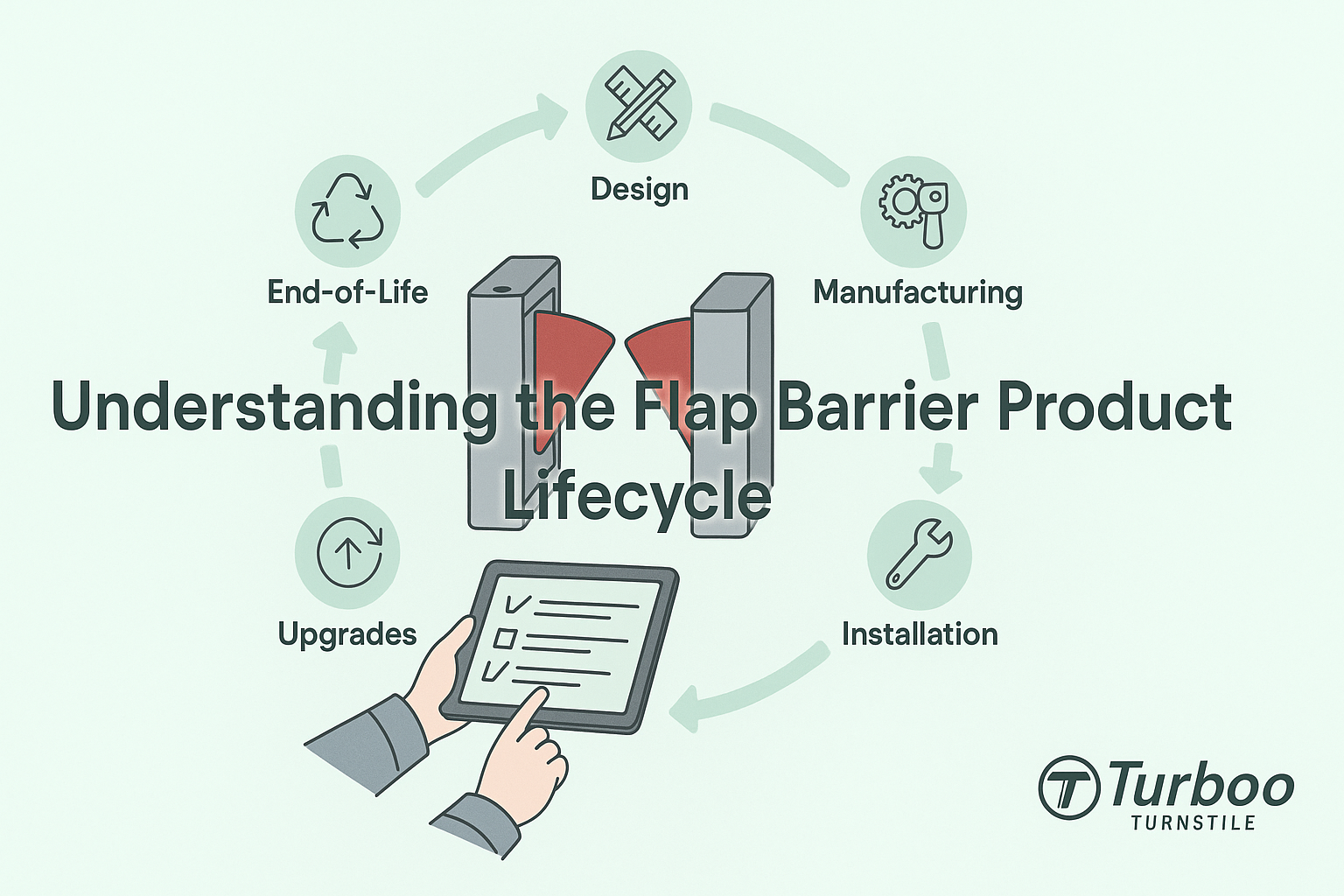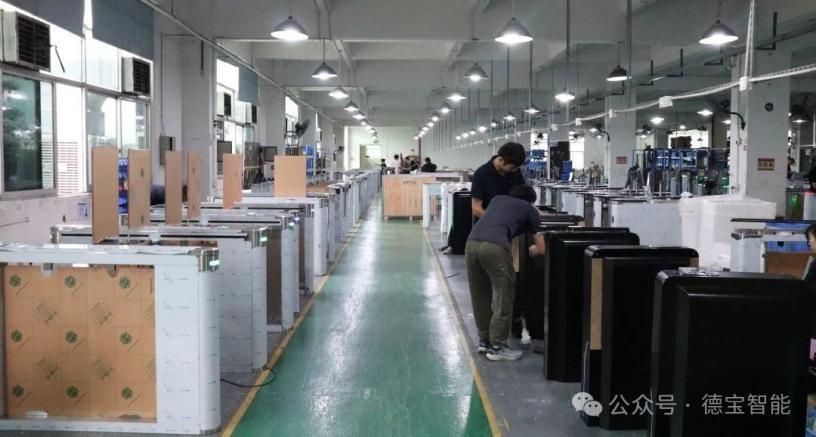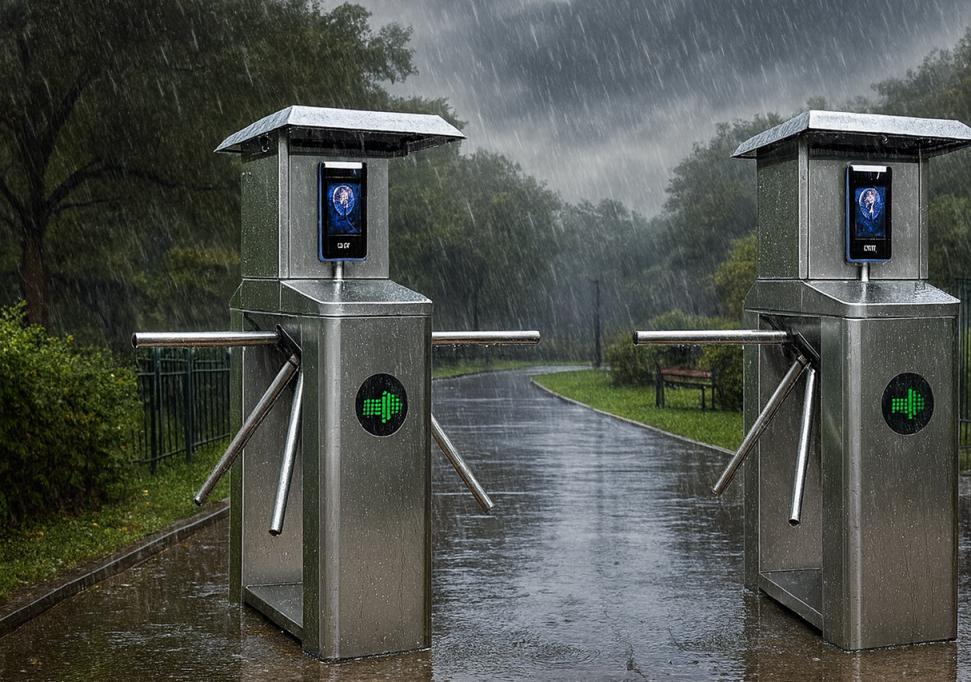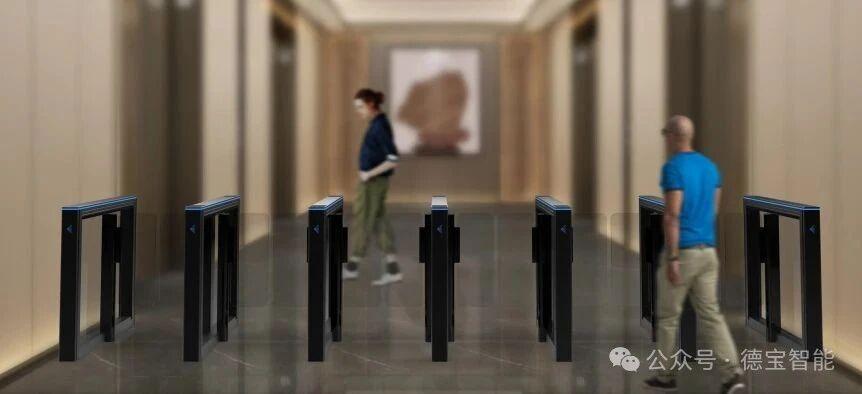What Are The Flap Barrier Product Lifecycle


Flap barrier systems are essential for managing access in a variety of facilities, from airports to corporate offices. Over the years, facility managers may find themselves navigating the challenges of maintaining these systems, ensuring they stay operational, and making decisions on repairs, upgrades, and replacements. The experience of managing flap barriers can be much smoother when there is a clear understanding of the full product lifecycle. Knowing how to optimize each stage—from procurement to upgrades—can help avoid unexpected costs, downtime, and unnecessary replacements.
In this article, we’ll break down each stage of the flap barrier lifecycle, offering valuable insights for smarter facility management. Whether you’re overseeing the initial purchase, performing routine maintenance, or planning for eventual upgrades, a thorough understanding of the flap barrier lifecycle helps you make more informed decisions, extending the system’s operational life and reducing the total cost of ownership.
Initial Selection and Procurement
The first step in managing a flap barrier’s lifecycle is selecting the right product. Choosing a flap barrier isn’t just about finding the cheapest or most readily available option; it’s about aligning the product’s specifications with your facility’s specific needs. Whether you’re outfitting an airport terminal or a secure building entrance, it’s important to assess key factors like traffic volume, required security features, environmental conditions, and expected lifespan.
Flap barrier systems come in various designs and functionalities, such as manual or automated models, and with varying features like integration with access control systems or the ability to handle higher throughput during peak hours. When making the selection, keep in mind how these factors align with your long-term goals for the system. A well-chosen barrier system will serve your facility better, perform more reliably, and help reduce unexpected costs over time.
Additionally, consider future needs during the selection process. If you anticipate that your facility’s security requirements will evolve, opt for a flap barrier system that can be easily upgraded or integrated with newer technologies. Understanding the full flap barrier lifecycle during this phase ensures that you make a wise investment that will serve you well beyond the initial installation.
Installation and Commissioning
The installation and commissioning of flap barriers are crucial for ensuring the system operates at peak performance from the start. A professional installation ensures that the barriers are set up correctly, both mechanically and electronically. Proper installation can help extend the product’s lifespan, preventing early malfunctions that could incur costly repairs or replacements.
Commissioning is the next key step after installation. This phase involves thoroughly testing the system to ensure that all components function as expected. During commissioning, technicians typically verify that the flap barriers are properly calibrated, integrate seamlessly with access control systems, and work as designed in real-world scenarios. A well-commissioned system will be much easier to maintain and less likely to experience early-stage problems, contributing to a smoother lifecycle management process.
Taking time for proper installation and commissioning sets the foundation for a long and productive flap barrier lifecycle. Skipping this step or rushing through it could lead to issues down the line, such as poor performance or reduced system longevity.
Routine Maintenance
Routine maintenance is the cornerstone of ensuring a long, reliable flap barrier lifecycle. Regular inspections and upkeep are necessary to identify wear and tear early, allowing you to address potential issues before they lead to costly repairs or system failure.
Key maintenance tasks include checking the mechanical components for signs of wear, cleaning the sensors, testing the system’s power supply, and ensuring that software is up-to-date. Performing these tasks on a regular basis helps prevent minor problems from escalating into major issues. For example, regular lubrication of moving parts can reduce friction and prevent breakdowns that could otherwise lead to significant downtime.
Additionally, keeping detailed maintenance logs allows you to track the system’s performance over time. This information can be invaluable for predicting when certain components will need replacement, which helps you plan ahead and budget for future expenses.
By committing to a strong maintenance routine, you can greatly extend the lifespan of your flap barrier system and keep it functioning optimally, avoiding unexpected disruptions to facility operations.
Software and Firmware Updates
Flap barriers are often equipped with software and firmware that control system operations, including access control integration, safety mechanisms, and more. These software systems must be regularly updated to ensure that the barrier operates smoothly and is compatible with any changes in your facility’s security protocols.
Software and firmware updates can address bugs, improve system performance, and add new features. Keeping your system up-to-date with the latest versions ensures that it remains secure, reliable, and efficient. This is particularly important as cybersecurity threats evolve and as new technologies emerge that could improve barrier system capabilities.
Regular updates can also extend the barrier system’s lifespan by keeping it compatible with new hardware or access control features that may be introduced later on. Flap Barrier Updates are an essential part of maintaining a barrier system’s optimal functionality.
Repair and Parts Replacement
Throughout the lifecycle of a flap barrier, parts will naturally wear out. Common components that require replacement include sensors, motors, and batteries. It’s important to track the performance of these components and replace them when necessary. Waiting too long to address worn-out parts can result in further damage or system failure, leading to more expensive repairs or even the need for a full system replacement.
A proactive approach to repairs and parts replacement can prevent prolonged downtime and reduce the likelihood of operational disruptions. Always work with professional technicians to ensure that parts are replaced with high-quality, compatible components. This ensures that the system continues to perform as expected throughout its life.
End-of-Life Planning and Upgrades
As with any technology, flap barriers will eventually reach the end of their useful life. Determining when a system has outlived its usefulness is a crucial part of lifecycle management. Several factors contribute to the decision of whether to upgrade or replace the system, including performance issues, evolving security requirements, and the availability of spare parts.
Signs Your Flap Barrier is Reaching End-of-Life
A flap barrier system may begin to show signs of aging, such as frequent malfunctions, excessive downtime, or inability to keep up with the increasing demands of user throughput. If the system becomes increasingly difficult to maintain, replacement parts are hard to find, or repair costs outweigh the cost of a new system, it may be time to begin considering an upgrade or full replacement.
Moreover, as technology advances, the functionality of older systems can become obsolete. Newer flap barriers often incorporate improved safety features, more efficient energy usage, better integration with access control systems, and enhanced software capabilities. When your facility’s security requirements evolve, upgrading your barrier system may provide better service and improved security compliance.
Upgrading vs. Replacing the System
When your flap barrier reaches the end of its life, you’ll need to decide whether to upgrade the existing system or replace it entirely. In some cases, a retrofit upgrade can extend the life of the system while adding newer features. For instance, upgrading the software and firmware or adding modern access control interfaces might solve many issues, providing a cost-effective solution.
However, if the system’s core components are outdated or no longer meet the required security standards, a complete replacement may be necessary. System Longevity in Security is a key factor in making this decision, as upgrading may not be enough if the infrastructure is fundamentally outdated.
Lifecycle Management and Cost Control
Effectively managing the flap barrier lifecycle can have a significant impact on controlling costs over the long term. Proper lifecycle management involves tracking the barrier’s performance, scheduling routine maintenance, and anticipating replacement needs to avoid unexpected expenses.
Cost Benefits of Lifecycle Management
When you regularly monitor the system and perform scheduled maintenance, the cost of repairs and replacements can be minimized. Many issues, such as motor malfunctions or sensor misalignments, can be prevented through early detection and routine checks. Addressing problems before they escalate into significant repairs helps keep costs in check.
Additionally, maintaining an accurate record of maintenance and parts replacement schedules can help you plan future budgets more effectively. Knowing when your system is likely to need an upgrade or a replacement allows for better financial forecasting, so unexpected expenses are less likely to derail your budget.
Strategies for Cost Control
- Planned Maintenance: Stick to a regular maintenance schedule to prevent costly repairs.
- Proactive Parts Replacement: Replace parts as they show signs of wear to avoid breakdowns.
- Technology Upgrades: Implement software and firmware updates regularly to avoid obsolescence.
- Evaluate Lifecycle Stage: Periodically assess where your system stands in its lifecycle and make cost-effective decisions about repairs, upgrades, or replacements.
Flap Barrier System Strategy is an essential part of long-term lifecycle management, and with the right strategies in place, you can avoid unexpected costs and downtime.
The Role of Technology and Evolving Needs
Over time, your facility’s needs may evolve, influencing the performance requirements of the flap barrier system. For instance, if the number of users increases significantly or if there are changes in security protocols, you may need to upgrade your flap barrier system to meet these new demands.
Adapting to Technological Advancements
Technological advancements play a crucial role in extending the lifespan of your flap barrier system. Newer systems often offer more efficient energy use, enhanced user throughput, and better integration with evolving security technologies. Additionally, as software and hardware improve, older systems may struggle to keep pace, prompting the need for an upgrade.
For instance, new features like biometric integration, remote monitoring, and cloud-based analytics can provide increased security, reduced maintenance costs, and more streamlined facility management. Keeping up with technological innovations ensures that your flap barrier system remains competitive, secure, and efficient.
Meeting Evolving Facility Needs
As your facility grows or its function changes, the need for an upgraded flap barrier system may arise. This could involve increasing the throughput capacity or incorporating new safety features that better align with the facility’s security standards. Regular lifecycle assessments help you plan for such upgrades, ensuring that you’re ready to adapt when these changes occur.
Planning for Longevity
Planning for longevity is a key part of effective flap barrier lifecycle management. By focusing on proactive maintenance, software upgrades, and technology improvements, you can significantly extend the operational life of your system, avoiding premature replacements.
Proactive Maintenance for Longevity
Proactive maintenance plays an essential role in maximizing the lifespan of flap barriers. Regularly checking and servicing components like sensors, motors, and mechanical parts can prevent them from breaking down prematurely. Scheduling routine inspections helps catch small issues before they become major problems, ultimately delaying the need for expensive repairs or a full system replacement.
Optimizing System Components
Sometimes, a full replacement is not necessary. Optimizing specific components, such as upgrading the software or replacing individual parts like motors, can provide significant improvements in performance and extend the system’s useful life. By making these incremental upgrades over time, you can ensure that your flap barrier system keeps up with your facility’s needs without a complete overhaul.
Real-World Examples of Successful Longevity Planning
Many organizations that manage high-traffic areas, such as airports or office complexes, have found that planning for longevity—rather than relying on reactive fixes—leads to smoother operations. One airport, for example, saw a 20% reduction in maintenance costs by shifting from reactive repairs to proactive inspections, extending the life of its flap barrier systems by over five years.
Conclusion
Understanding the flap barrier product lifecycle is essential for making informed decisions that extend the lifespan of the system while minimizing unexpected costs. By carefully managing each phase—from selection and installation to ongoing maintenance and eventual upgrades—you can maximize the performance, reliability, and cost-effectiveness of your barrier system. Planning ahead and staying proactive will help you avoid unnecessary downtime and ensure that your system continues to meet evolving facility needs. Regular reviews and maintenance, combined with strategic upgrades, will keep your flap barriers running efficiently and securely, reducing your total cost of ownership.












